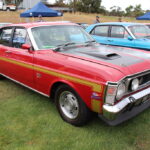Should You Press Clutch While Braking (Easily Explained)
One common question that owners of manual vehicles ask is if it’s best practice to press the clutch while braking or not.
The answer to this question is, “it depends.” Whether you should press the clutch or not when braking depends on the need for braking.
As a fan of the proper way of driving, I’ll explain when you should press the clutch and when you shouldn’t while braking.
Should You Press Clutch While Braking A Car?
There’s no need to press the clutch every time you’re braking. It’s recommended only in a couple of situations, for example when halting the car. Overusing the clutch might cause faster braking elements to wear out.
Why Should You Avoid Pressing the Clutch When Braking?
You should avoid pressing the clutch when braking because compared to engine braking, it will take your car longer to decelerate, and it will faster damage your brake pads and discs.
Braking demands that you release your foot from the gas pedal before pressing the brake pedal. Releasing your foot from the gas pedal alone sends a signal to the engine that you’re trying to slow down your car. The components in the engine then start to decelerate your car.
The ability of your car engine to decelerate your car is tagged engine braking, and it helps to bring your car to a halt faster than using the brake while pressing the clutch pedal. The major benefit of this is that you need less force on your brake to halt your car, lessening the rate of wear on your braking system.
However, if you choose to press the clutch while braking, you’re preventing your engine from contributing to the braking process. This makes your car take longer to stop.
Following this best practice is essential in ensuring that your brake pads and discs serve you longer. Since your braking system does a lot of work, the components are prone to damage, requesting a replacement.
Your driving style contributes largely to how often you change the parts. Hence, leveraging the engine braking while braking by not pressing the clutch pedal helps give your braking system a longer lifespan.
Read it: Are Junkyard Parts OK? Which Parts Shouldn’t You Buy?
How Does a Clutch Work?
To fully understand when to press the clutch and when not to press it, it’s best to understand how a clutch works in a car.
A clutch looks like this:

A clutch comprises two metal plates that you can separate by depressing the clutch pedal. Separating the metal plates means you’re disengaging the wheels from the engine. Hence, every time you press the clutch pedal, you’re telling your car to separate the wheels from the engine. This prevents the engine from sending power to the wheel.
Since your car’s engine is always turning, the engine sends power to the wheels when the car is in gear. Therefore, when the car is stationary but in gear, the engine sends power to a stationary wheel, causing the car to stall.
This also explains why a car stalls when you try to pull away without properly applying the clutch. In this situation, the car receives more power than it can control.
The more you release the clutch pedal, the more the plates in the engine enclose and the more the power that the wheels receive. When you completely release the clutch pedal, the engine sends power to the wheels fully.
The term “biting point” is used for the point where the plates touch to transmit power to the wheels.
Trending Video: How to Easily Bring Back to Life any Old Car Battery and Save Tons of Money (click to watch)
In What Braking Situation You Have to Press the Clutch?
To avoid braking components from wearing out, You need to press the clutch only if you halt the car, shift to a lower gear and stop the car in the intersection or at the stoplights.
Halting the car: When you already plan to brake and have a long-distance ahead, press the clutch and then the brake. Doing this ensures you’re disconnecting the wheels from the engine and can halt the car with only the braking system.
Shifting to a lower gear: When you have to press the brake to shift to a new (lower) gear, it’s best practice to press the clutch. Once you’re through changing the gear, release your foot from the clutch pedal and continue with the ride.
Stopping the car: That’s obvious, but make sure to press the clutch when you’re about to stop your car. It doesn’t matter if you want to stop in front of the stoplight, in the gas station, or you want to suddenly break. But remember not to press the clutch too early. Press the clutch when the engine rotation is below 1.500 RPM.
I bet you don’t know when is the time to replace clutch. In this article, you’ll get to know everything about it.
When Shouldn’t You Press Clutch?
One common situation you don’t have to apply the clutch when braking is when you’re only having a temporary slowdown. When driving, you’ll come across some conditions when you have to slow down a bit. Such conditions include when you come across a small obstacle you need to turn away from slightly.
As you attempt to turn away from the obstacle, you want to slow down a bit and speed up again once you’re through with the obstacle. In this case, only press the brake and neglect the clutch as you’re only slowing down temporarily and will still accelerate the car.
Remember that slowing down temporarily means you’re not crossing the lowest speed for the gear you’re driving at. Hence, your car won’t stall if you don’t apply the clutch.
It’s also worth noting that different cars have different lowest speeds for each gear. Therefore, it’ll help to acquit yourself to the lowest speed for each gear of your car.
Read it: Are Diesel Engines More Expensive to Maintain? No…
How Best to Use the Clutch When Braking?
Having gone through the right situations to press the clutch while braking, it’s equally important to explain how best to use the clutch.
Remember that not using the clutch properly can cause the car to stall, which is not healthy for your clutch, transmission, and engine. The explanation behind the car stalling while braking is that the car is stopping while the wheels are still receiving power from the engine.
Since you aren’t accelerating, the engine’s revs keep falling, stopping the engine, and the car stalls.
Hence, it’s important to know how to apply your clutch to prevent your car from stalling and ultimately preventing some parts from damaging.
Note that how best to use the clutch while braking depends majorly on the car’s current acceleration.
Here’re tips on applying a clutch and the brake:
Low Speed: Clutch before Brake
When driving at a slower speed to the lowest speed of the gear you’re driving at and have to press the brake, it’s recommended to press the clutch before pressing the brake pedal.
The lowest speed of a gear is the car’s speed when the clutch and accelerator pedals are released. This is often common in bumper-to-bumper traffic, where your speed is usually the lowest speed of the first gear.
For example, when you’re driving at 8 kph while on your car’s first gear and the lowest speed for the car’s first gear is 10 kph, then you have to press the clutch before the brake to prevent the car from stalling.
Sudden Braking: Clutch and Pedal Simultaneously
There are situations you need sudden braking without a prior plan to do so. Though it seems wise to press only the brake and not with the clutch pedal so the engine brake can contribute to the braking process, this might not be suitable for sudden braking.
Pressing the clutch and the brake simultaneously ensures that you don’t accidentally accelerate the car since this engages the wheels from the engine. This lets you bring your can to a halt with only the braking power.
High Speeds: Brake before the Clutch
When you’re driving at high speed and need to slow down, you only need to apply the brake and leave the clutch released. However, when the speed is lower than the gear’s lowest speed, the car is prone to stall. Hence, it’s necessary to use the clutch after applying the brake in this situation, probably to shift to a lower gear.
The car will give you a sign of stalling by struggling, and this should prompt you to apply the clutch after applying the brake.

How to Unlearn Excessive Clutch Pressing?
Now that you’ve realized that you press the clutch pedal excessively, it’s important that you unlearn the habit and stick to the best practice.
The best way to unlearn excessive clutch pressing is to practice what you have learned and pay attention to your driving style. This might be hard to adapt to on your next ride, but with constant practice, you’ll soon get the hang of it.
Find a good place to practice your new driving style and start with low gears. Once you’re good to go with lower gear, it’ll be easier to apply the new style to high gears.
Conclusion
A lot of drivers are used to pressing the clutch every time they’re braking. This is because they believe the brake has to work together with the clutch once the car engine is running. However, this shouldn’t be so: there are special situations to apply the clutch while braking, which this article has addressed.
Other than when halting the car and when shifting to a lower gear, there is no situation to press the clutch pedal when braking.






